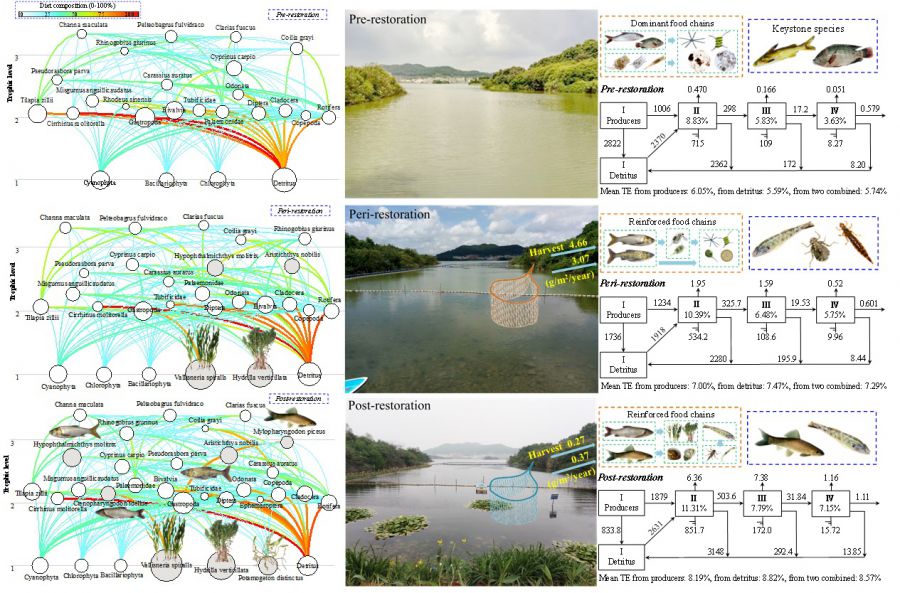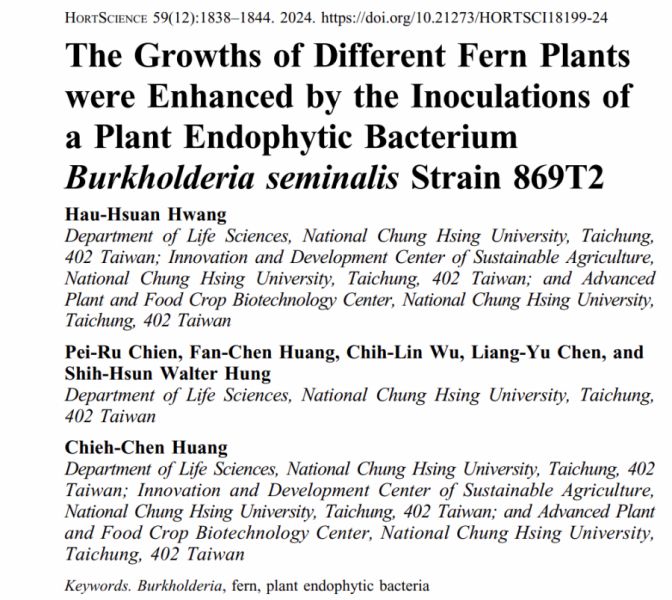| 論文篇名 | 英文:Application of mass-balance modelling to assess the effects of ecological restoration on energy flows in a subtropical reservoir, China 中文: 藉由生態模式評估亞熱帶水庫生態復育對於能量流之效應 |
| 期刊名稱 | Science of the Total Environment |
| 發表年份,卷數,起迄頁數 | 2019, 664:780-792. |
| 作者 | Wang S, Wang L, Zheng Y, Chen ZB, Yang Y*, Lin HJ*, Yang XQ, Wang TT |
| DOI | 10.1016/j.scitotenv.2019.01.334 |
| 中文摘要 | 優養化是全球靜水域最主要的傷害。為了抑制藻類藻華移除多餘營養,我們在一個優養化的亞熱帶水庫進行生態復育計畫。我們運用3個生態模式從生態系尺度評估復育效果,並利用時間序列模擬漁業政策。在復育過程中,我們發現因為魚類攝食率升高,基礎生產量回流至碎屑量變少;因為食物鏈浮游食物鏈、藻食食物鏈及食軟體動物食物鏈之能量提升,營養傳輸效率也跟著提升;基石物種從肉食性魚類轉變為食無脊椎動物魚類以及雜食性蝦類,顯示從右上而下之控制轉變為蜂腰控制之生態系;食物網路徑長度、能流量、物質循環以及網絡資訊皆顯示附誒後之生態系統更為成熟。為使生態系統永續,最高漁獲量只能維持在0.37–8.53 g/m2/year。 |
| 英文摘要 | Eutrophication is a leading cause of impairment of lentic water bodies throughout the world. To inhibit algal blooms and remove excess nutrients, a 10,000 m2 restoration project consisting of vegetation establishment and fish manipulation was conducted in the eutrophic bay of the Yantian Reservoir, southern China. Three Ecopath models were constructed to assess the recovery effects at an ecosystem level, and time series data were simulated to propose a fishery policy. During the restoration, 1) the redundant primary production flowing back to detritus decreased due to the increased predation of four stocked fish with different feeding habits; 2) the transfer efficiencies (TEs) through trophic levels increased due to the reinforced energy flows along the planktivorous, herbivorous, and molluscivorous food chains; 3) the groups that had the highest keystoneness shifted from carnivorous fish to invertivorous fish and omnivorous shrimp, indicating the shift of mixed trophic impacts from top-down to wasp-waist control; and 4) the changing indices of path length, flow fluxes, matter cycling, and network information showed that the restored system was more mature, developed, and organized than before. To sustain the long-term energy balance and functioning of the ecosystem, the maximum fishing yields (0.37–8.53 g/m2/year) were determined to maintain the relative biomass (close to 1) of stocked fish and wild tilapia by harvesting their annual production. |
【學術亮點】藉由生態模式評估亞熱帶水庫生態復育對於能量流之效應 2019-01-28

生態農業:農業溫室氣體減量【生科系林幸助特聘教授】






